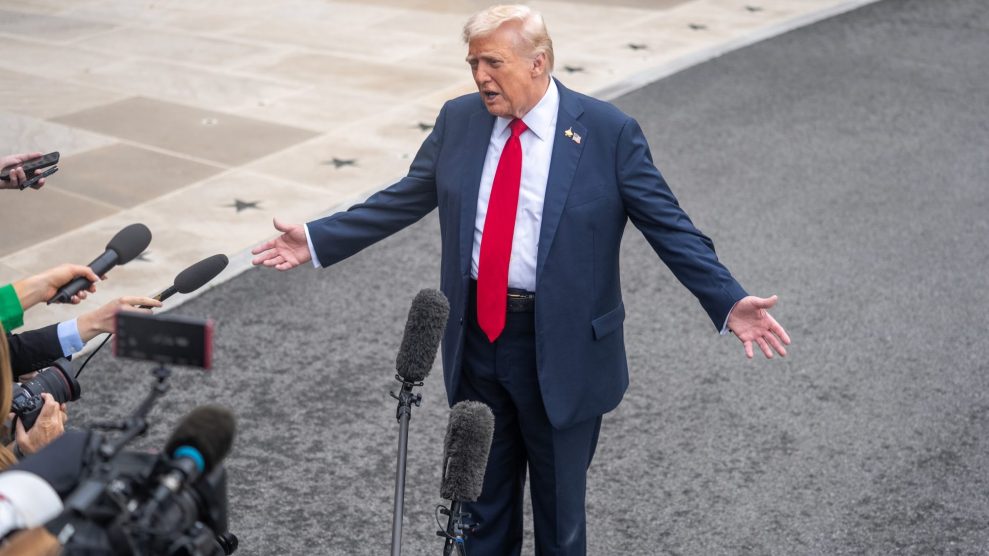While other nations have government-run central banks, the US financial system is managed by a quasi-governmental institution effectively owned and operated by the private banking industry. Often described in oxymorons—as a “public-private” system or a “decentralized central bank”—the Federal Reserve is overseen by a board of governors appointed by the president and confirmed by the Senate. But it’s the banks making up its membership that have called the shots, especially under two decades of leadership by the notorious anti-regulator Alan Greenspan.
The Fed’s role in the current economic crisis traces back to at least 1999, when the Clinton administration backed legislation—fiercely promoted by Wall Street and sponsored by then-Sen. Phil Gramm—collapsing the long-standing fire wall between traditional commercial banks (which did things like provide checking accounts) and investment banks. The Fed was designated the “umbrella supervisor” of the newly consolidated industry, but with regulatory powers so limited that they were referred to on Wall Street as “Fed lite.”
For nearly a decade, Greenspan rebuffed direct warnings about the looming credit crisis. Jane D’Arista, director of programs for the Financial Markets Center, a think tank on monetary policy, says it was the Fed’s “ideological commitment to deregulation” that made it fail to impose limits on mortgage lenders until the subprime crisis had exploded—”the proverbial closing of the barn door after the horses were out.”
What form could a Fed overhaul take—if Congress and the next president had the guts to do it? One option would be to make the bank part of the Treasury Department, a scheme that has been floated by various economists. Under such a plan, the Fed would be subject to congressional oversight and the heads of the regional Federal Reserve banks—who wield considerable power through the Federal Open Market Committee, which sets key interest rates—would become government appointees as well.
A move to Treasury, points out William Greider, author of Secrets of the Temple: How the Federal Reserve Runs the Country, would place the body that functions as the fulcrum of the national economy firmly within the constitutional system of checks and balances. “The grand bargain that ought to be pursued is more leverage for more accountability,” says Financial Markets Center founder Tom Schlesinger.
yeas: House Financial Services Committee Chair Barney Frank, Barack Obama, and Treasury Secretary Henry Paulson have all outlined plans advocating broader Fed powers, including regulation of the Wild West territory of investment banks, hedge funds, and derivatives. But no national leader (with the exception of Ron Paul, who thinks the Fed is unconstitutional) envisions making the Fed itself more accountable.
nays: The finance sector fought off the threat of a publicly controlled central bank back in 1913; today (with lobbying expenditures totaling more than $3 billion over the past decade, more than any other industry), it is an equally formidable opponent.
chances? Sweeping change is unlikely, but lawmakers can demand more transparency by threatening to do the Fed’s job for it: Barney Frank, for example, has introduced legislation to make up for the Fed’s weakness in controlling predatory lending. Or the new president could form a subpoena-equipped commission (proposed by John Edwards) to regulate consumer loan practices as well as monitor pensions and 401(k)s.
















